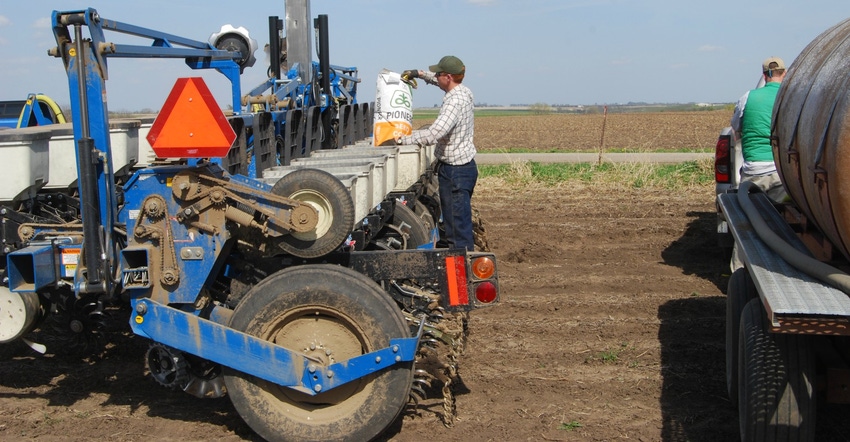April 10, 2020

The weather from March into early April was warm enough and dry enough to the point that soil conditions were good for planting in many areas of Iowa. The calendar date is still a bit early. Remember, for crop insurance to be able to cover the cost of replanting, April 11 is an important date. You have to plant after April 11 for the corn to be covered by insurance, in case you have to replant if the stand emerges poorly later on.
Regardless, many farmers in Iowa are pondering if they should be planting corn already, and some maybe already have planted during the first week of April.
Now is the time to exercise caution and patience. The five- to 10-day weather forecast as of April 9 is moving to the cooler side of things, with some daytime temperatures forecast to be below 40 degrees F and nighttime temperatures below freezing.
Additionally, date of planting trials in Iowa and surrounding states suggest that maximum yields come from planting dates after mid-April. There are several things to consider that might halt the desire to plant ahead of a cold spell forecast.
Aim for good germination
Seed germination is a two-step process. The first step is imbibing water; a corn seed absorbs about 30% of its weight in water. Absorption of water is not dependent on the temperature of the water or soil.
The second step of germination, which does depend on soil temperature, is the growth of the radicle root and coleoptile shoot. If soil temperatures are below 50 degrees at planting depth, initiation and growth of the radical and coleoptile will not occur or will be very slow. This delay results in higher risk of insect and disease pathogen pressure, resulting in lower seedling emergence or seedling vigor.
Even though soil temperatures were above 50 degrees in the days ahead of April 9, temperatures can quickly plummet. The odds for more cold weather and possibly snow in some areas of Iowa are high in the coming week. With that in mind, to minimize risk, you should wait to begin planting corn when soils are 50 degrees and rising. See the Guide to Iowa Corn Planting for corn planting information.
Cool soil temperatures early in the season increase variability in final stands. It’s important to give every seed the chance to emerge, as uniform emergence is important for maximizing corn yields.
Problems for corn in cold soils
Corn planted into cold soils usually runs into several problems. Cool soil conditions early in the season lead to uneven emergence, and uneven growth and development from one plant to another. Once the seed begins to germinate, a significant change in soil temperature can cause problems for mesocotyl growth such as reduced vigor, leafing out underground, corkscrewing, or in severe cases, seed and seedling death. To maximize yield, you need to manage corn to reduce plant-to-plant variability.
In addition to the effects of early planting on seed development and growth, early planting also exposes seeds and seedlings to increased potential for frost, which is still possible into early May. Since a corn seedling's growing point is below ground until the V6 stage of plant growth, corn can withstand short bursts of freezing temperatures when plants have emerged until the V6 stage.
Frost affects plants differently
What we don't always say — or for that matter, fully understand — is that frost often affects individual plants differently, resulting in more variability from one plant to another. That variability can result in unequal interplant competition and lower yield potential. Depending on the potential date of replant though, keeping the surviving stand — albeit of variable plant heights and development — may still be the best option.
In addition to the impact on seedlings, extreme cold snaps can refreeze soils down to seeding depths. This can and does kill seeds and growing points, reducing stands and forcing a complete replant.
Licht is the Iowa State University Extension cropping systems agronomist. Contact him at [email protected].
About the Author(s)
You May Also Like






